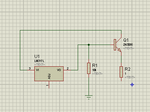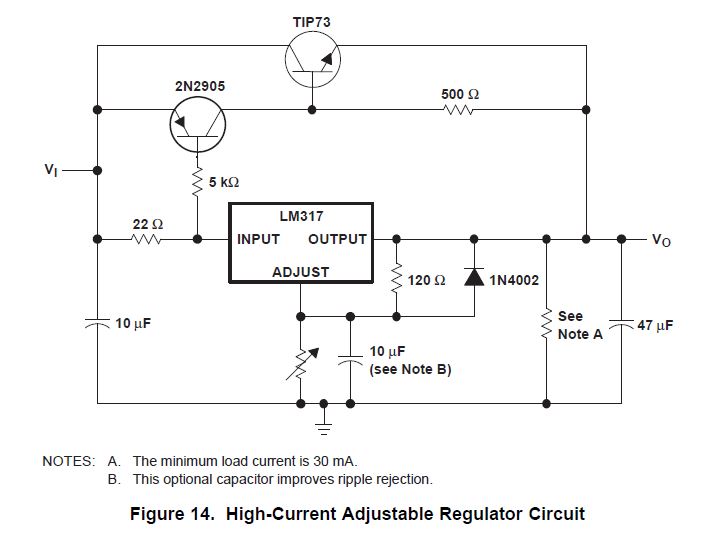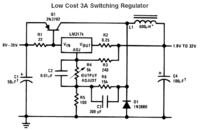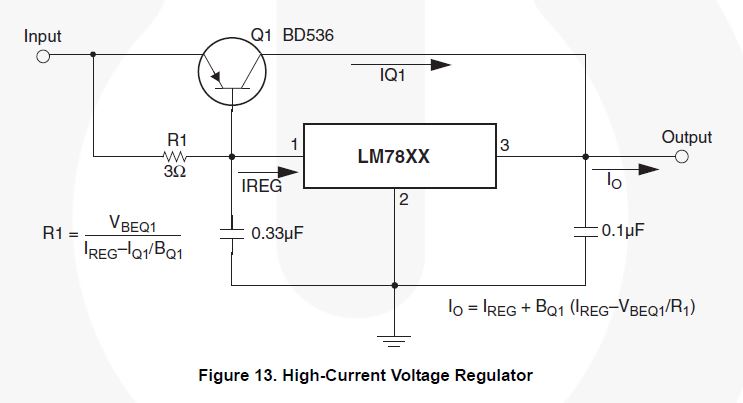Suhas Anand
Junior Member level 2

- Joined
- Nov 1, 2014
- Messages
- 24
- Helped
- 5
- Reputation
- 10
- Reaction score
- 4
- Trophy points
- 3
- Activity points
- 151
Hello. I wanted to build a good psu with high current output for my projects and came across the circuit with a pnp pass transistor. Due to its simplicity i chose this circuit.
However I'm not able to get proper output after rigging up the circuit. When the pot is in the max position the output voltage is max. When i decrease slowly output voltage decreases and at a certain point the voltage starts increasing and shoots up to the max value again. When this happens the R3 gets really hot and I have burnt few resistors while testing. I dont know what s wrong with the circuit. Have been trying to debug for days.

However I'm not able to get proper output after rigging up the circuit. When the pot is in the max position the output voltage is max. When i decrease slowly output voltage decreases and at a certain point the voltage starts increasing and shoots up to the max value again. When this happens the R3 gets really hot and I have burnt few resistors while testing. I dont know what s wrong with the circuit. Have been trying to debug for days.

This is very simple 1.2 - 36V adjustable bench power supply with 5A of output current. Max input voltage is 37V and output is adjustable via potentiometer between 1.2 up to 36 volts. TIP147 PNP darlington transistor boosts the current of LM317 from 100mA to 5A. LM317 is the most useful and inexpensive adjustable regulator and for this circuit you can also use LM317L that can give 100mA, that's enough for transistor bias. D1 and D2 are protection diodes because when you turn the circuit off the output capacitors are discharging and can damage the transistor or regulator.
R1 is 2W and other resistors are 0.25W
R1 is LM317 current limiting resistor and R2 is Q1 bias resistor all capacitors are 50V RV1 is 5k multiturn volume pot.
100nf capacitors are in parallel with electrolytic capacitors to remove high frequency noise because large value electrolytic have large ESR and ESL and can't remove high frequency noise.
I will design a pcb for this circuit and add to this project.
Q1 needs heatsink and small fan. Maximum output power of adjustable power supply is 125W.
Last edited by a moderator:






